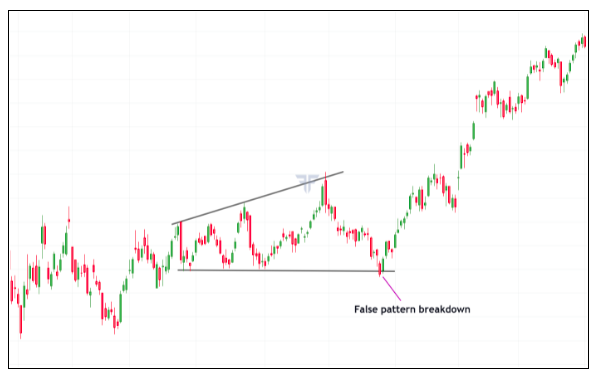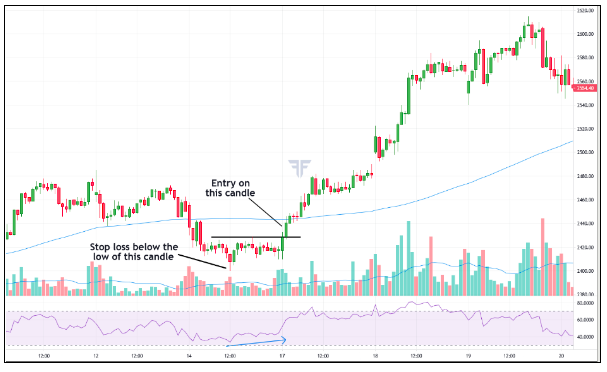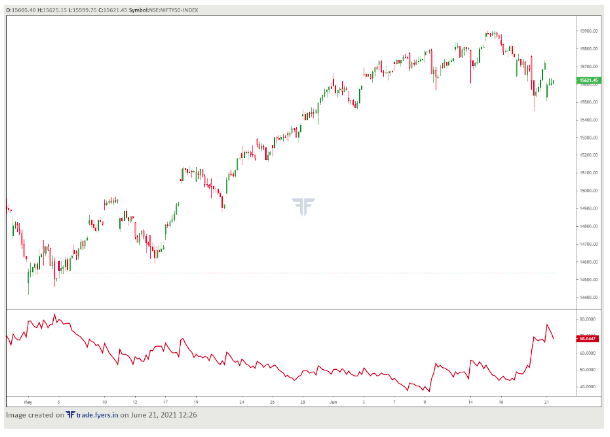
In the previous chapter, we talked about certain aspects relating to trading such as capital required to trade, the reward to risk ratio, determining entry price, and determining target price. In this chapter, we will continue our discussion on Risk Management and talk about arguably the most important part of trading: stop losses. Besides, we will discuss about leverage and provide some suggestions on stop losses.
Determining Stop losses:
At the time of entering a trading position, the outcome is not known. The trade could turn out to be right, in which case you could earn a profit, or it could turn out to be wrong, in which case you could incur a loss. No matter how strong a conviction you have, any unexpected news flows, for instance, could cause price trends to change swiftly and without much warning. Sometimes, if the losses are not cut out soon, they could get so huge over time that they can severely dent your trading capital or wipe it off entirely. This is especially the case when you are trading with leverage. Hence, it is critical to always trade with a stop loss, to ensure that in case your trade goes wrong, you could close your position(s) soon with a level of loss that is acceptable to you.
Such stop losses that are placed at the time of entering a position are known as protective stop losses. As the name suggests, a protective stop loss is aimed at protecting capital. Having in place a protective stop loss has a two-fold advantage. One is that it cuts short your losses and prevents them from deepening further, thereby safeguarding your capital. And the other is that it reduces the level of stress and allows you to focus on new trade setups as well as on your other existing positions, if any. Remember, as a trader your first and foremost objective should be to safeguard the capital deployed. Earning returns on capital deployed comes after that. After all, profits would be a distant dream if you do not pay any heed to risk management and end up blowing your account in the first few trades!

Above, notice the false pattern breakdown. Imagine shorting the break without having in place a stop loss, only to then be forced to exit at a much higher price. It is for this reason that stop losses are an absolute must. By the way, the pattern in the chart is called an ascending broadening pattern.
Now, how do you determine a stop loss when entering a position? Well, there are various ways to do so, which we shall discuss shortly. Let us start with a simple, hypothetical example. Let us say that you have spotted a long opportunity at ₹100 and expect price to rise to ₹110 in the short-term. You typically trade with an RRR of 2, based on which you decide to a place a stop loss at ₹95. Once a stop loss has been determined, you must always respect it. If it is hit, you must exit the position at all costs, rather than having a second option to do so. In the context of this example, if the price declines and falls to ₹95 going forward, you must exit the position.
This is just one method in which a stop loss could be placed. This is called the point-based stop loss. Some of the important stop loss methods are as mentioned below:
- Point-based stop loss
- Technical stop loss
- Percent stop loss
- Volatility stop loss
- Time-based stop loss
Let us now discuss each of them.
Point-based stop loss:
This is the method that we spoke about earlier in this chapter. Under this method, once an entry has been identified, stop loss is placed a certain points below (for longs) or above (for shorts) the entry level. Depending on factors such as RRR and target, a stop loss is placed accordingly. For instance, like in the above case, if you decide on a target that is 10 points above the entry price, you might place a stop loss that is 3 points or 5 points below the entry price, depending on your preferred RRR. While this method is not the most appropriate method of placing a stop loss as compared to the other methods that we shall discuss later, it nonetheless is still better than not having a stop loss at all.
Technical stop loss:
Technical stop losses are those that are determined based on what the charts suggest. If this approach is used, you would place a stop loss not at some arbitrary price level but rather below an important support or above an important resistance. Such supports and resistances could come in various forms, such as:
- Prior highs and lows
- Trend lines and channels
- Fibonacci retracement and Andrew’s Pitchfork
- Technical indicators such as moving averages, Ichimoku cloud, Parabolic SAR, MACD...
- Oscillators such as RSI, stochastics etc…
- Japanese candlestick patters
- Column reversal on Point and Figure charts etc.

In the above chart, if one wanted to create a long position above the trend line resistance (2430), where could the stop loss be placed? Well, one possible stop loss for this trade could have been below the ‘Hammer’ candle that formed right at the price bottom. As this low is at 2400, a stop loss could have been placed just underneath 2400 (say, 2397) rather than exactly at it, just to reduce the possibility of a whipsaw (price touching the low and then reversing right off it). So, this is one such possible stop loss that is based not only on a previous low but also on an important candlestick pattern. Another thing to note in this chart is the number 2400, a round number. Technically, round numbers are important supports/resistances (support in case of the chart above). This is because a lot of orders tend to be pre-placed at such levels, which often causes price to reverse from its vicinity. In case of the chart above, being a round number gives the stop loss an added credence.
Going forward, what if 2400 had instead broken? Well, such an event would have signalled that the downtrend is likely to continue and that it is better to close out the long position by accepting a small loss rather than seeing the losses magnifying over time.
Volatility stop loss:
This is a slightly unique way of setting stop losses. Under this method, stop losses are determined based on how volatile the security has been on the time frame that is being looked at, which could be intraday, daily, etc. If the security has been volatile in the recent past, a trader would place a larger stop loss, so as to avoid getting whipsawed due to higher volatility. On the other hand, if the security has been less volatile, a trader could place a smaller stop loss to ensure that he or she does not remain stuck in a trade for too long. There are various ways in which the volatility of a security could be measured. One way is to use the Volatility Index (VIX) to gauge the volatility of the overall market as well as to use the Implied Volatility (IVs) of stock options to gauge the volatility being priced for individual stocks. Another way is to use statistical tools that we discussed earlier in this module, such as standard deviation. Yet another way is to use volatility-based tools and indicators available on most charting platforms.
From a charting perspective, two of the most popular technical indicators that are used to measure volatility are Bollinger Bands and Average True Range (ATR). We have spoken extensively about them in the Technical Analysis module. If you are not well versed with these indicators, we highly suggest you click here to learn about Bollinger Bands and here to learn about ATR. Besides, the size of a candle or a bar can also give clues about volatility. In a volatile market, it is typical for candle sizes to be larger; while in a calm market, it is typical for candle sizes to be relatively smaller.

The above is the hourly chart of Nifty. The indicator that is plotted below the price is the ATR. A rising ATR line indicates an expansion in volatility, and vice versa. So, by looking at the line, you can get a clue about the volatility that the security has experienced over the past ‘n’ candles (the default value of ‘n’ is 14). Besides telling about volatility, the ATR can also help in the placement of a stop loss. For instance, in the chart above, see that the most recent ATR reading is around 70. If a trader is wishing to initiate a position based on this time frame (hourly), he or she could place a stop loss that is something like 1*ATR (i.e., 70 points) or 2*ATR (i.e., 140 points) away from the entry price.
Percent Stop loss:
Under this method, stop loss is set a certain percent away from the entry price. The percentage chosen could depend on a few parameters such as the risk tolerance per trade and the time period for which the position is taken. For instance, a risk-averse trader or a short-term trader may prefer trading with a smaller percent stop loss, such as 0.5%, 1%, or 2% from the entry price. On the other hand, a risk-taker or a positional trader might prefer trading with a larger stop loss, such as 5% or even 10% from the entry price. A trader could also choose to keep a stop loss that is a certain percent of the overall capital for every trade that he or she initiates. As an example, if a trader has an overall capital of ₹5 lacs, then he or she could set a stop loss per trade equal to, say, 0.5% (₹2,500) or 2% (₹10,000) of the overall capital.
Time-based stop loss:
A time-based stop loss is typically used in conjunction with one of the stop loss methods that we have discussed in this chapter. While it is not an absolute must, it is always beneficial to have in place a time-based stop loss. Doing so ensures that you do not remain stuck in a position beyond your preferred holding time horizon. Let us understand how. Let us assume that a short-term buy trade has been initiated at ₹100 with a stop loss at ₹95 and a target at ₹112. After the entry, what if the stock starts consolidating over the next several days and neither hits the stop loss nor achieves the target? Well, in that case, it would be clear that the trade is not working out as expected. If the position is open, there is an opportunity loss as the tied up capital might prevent a trader from deploying money in stocks where there are good trading opportunities.
Hence, implementing a time-based stop loss in addition to the actual price-based stop loss ensures that your capital does not get stuck for a long-time in one trade. What is the definition of time here? Well, that varies from one trader to another. For instance, a day trader could have a time-based stop loss of, say, 3 hours. So, if an open position is not working out as hoped for, he or she would close it out 3 hours after the entry. On the other hand, a positional trader could place a time stop loss of, say, 10 days. If the position entered into is neither hitting the stop loss nor achieving the target, the position would be closed out after 10 days.
Some suggestions on Stop losses:
Below mentioned are some suggestions on stop losses that are worth keeping in mind:
-
When entering into a position, always do so with a stop loss. Never trade without a stop loss.
-
Place a stop loss at a level which you expect has a low probability of being hit and which, if gets hit, will not hurt your capital much.
-
When a stop loss is hit, exit the position without a second thought instead of holding onto it on the basis of ‘hope’ that price will eventually move in your favour.
-
Do not select stop losses randomly but rather do so on the basis of technical or quantitative parameters.
-
Do not place a stop loss that is too close to your entry, as you could get whipsawed quickly.
-
Similarly, do not place a stop loss too far from your entry, unless you can tolerate the losses or unless the potential reward adequately compensates the risk being taken.
-
If long, do not place stop loss exactly at support or a key round number, as the chances of getting whipsawed are higher. Instead, place the stop loss a few ticks below the support or the round number. This logic applies to stop loss on short positions too.
-
When a stop loss is hit, always spend some time in analyzing why it was hit. Was it just bad luck or could it have been avoided? Doing so would help you learn from your mistakes, potentially avoid them in future, and improve on your trading success.
-
When taking leveraged positions, stop losses gain even more prominence. Only select stop losses that you can reasonably afford to tolerate without taking a hit on your capital.
-
When your position is decently profitable, it is wise to trail the stop loss in the direction of that position. Doing so would reduce the extent of the loss and in some cases, might even allow you to exit at a profit even when the trailing stop loss is hit.
-
Stop losses and position size are correlated. Depending on the distance of the stop loss from the entry, you could vary your position size to manage risk. We will talk more about this in the next chapter.
Be mindful of leverage, it is a double-edged sword:
When you trade in derivatives (buy futures, sell futures, or sell options), leverage is an important part of the game. You would be able to take, say, ₹100 worth of position with a margin of just, say, ₹25. Put it in other words, you would be controlling ₹100 worth of position with just ₹25. Now, this has both positives and negatives. The positive is that if the price moves in your favour, you will reap the benefits of the entire amount and not just the margin. However, the opposite is also true when the price moves against you. It is for this reason that leverage is called a double-edged sword. It can hurt you as much as it can benefit you. We talked about leverage along with a practical illustration in one of the earlier chapters in this module. To read it, click here and here.
You need to use leverage wisely. If not, you could blow up your account within days. Let us understand this using an example. Let us say that you have around 10 lacs in your trading account. You expect Nifty to rise in the short-term and hence, want to take a long futures position. The initial margin per lot is ~₹1.65 lacs. If you buy 1 lot of Nifty (lot size = 75), a 200 point decline would lead to a loss of ₹15,000. As a percent of the overall capital, the loss turns out to be 1.5%. But what if you had instead taken position to the tune of 5 lots? In that case, the margin needed to buy would be ₹8.25 lacs (₹1.65 lacs * 5). Now, a 200 point decline would lead to a loss of ₹75,000. As a percent of the overall capital, the loss turns out to be 7.5%. Notice the difference? In the first scenario, the loss is bearable, as it is 1. 5% of the total capital. In the second scenario, the loss is quite big. Losing 7.5% of your total capital in just one trade is not a wise strategy.
Hence, when trading using leverage, risk management becomes even more critical. Proper position sizing strategies and stop losses are an absolute must in managing risks efficiently and in avoiding capital ruin. As said earlier, stop losses and position sizing are correlated. For instance, continuing with the prior example, if you want to trade more than 1 lot of Nifty with a capital of ₹10 lacs, it makes sense to trade with a stop loss that is not far from the entry. This ensures that in case your position gets stopped out, the losses (both absolute and as a percent of total capital) will not be quite severe. On the other hand, if you want to trade just a lot of Nifty with a capital of ₹10 lacs, then you would have the leeway to keep a slightly wider stop loss. As a preference, if you are an intraday trader, you should not be risking more than 0.5-1% of your overall capital in a single trade. Meanwhile, if you are a positional trader, you ideally should not risk more than 2-3% of your overall capital on a single trade. Keep in mind that these are only guidelines and not hard and fast rules. These figures can vary depending on your style of trading, capital in hand, risk tolerance level, and trading experience. We will focus on position sizing strategies in the next chapter.
Next Chapter
Comments & Discussions in
FYERS Community